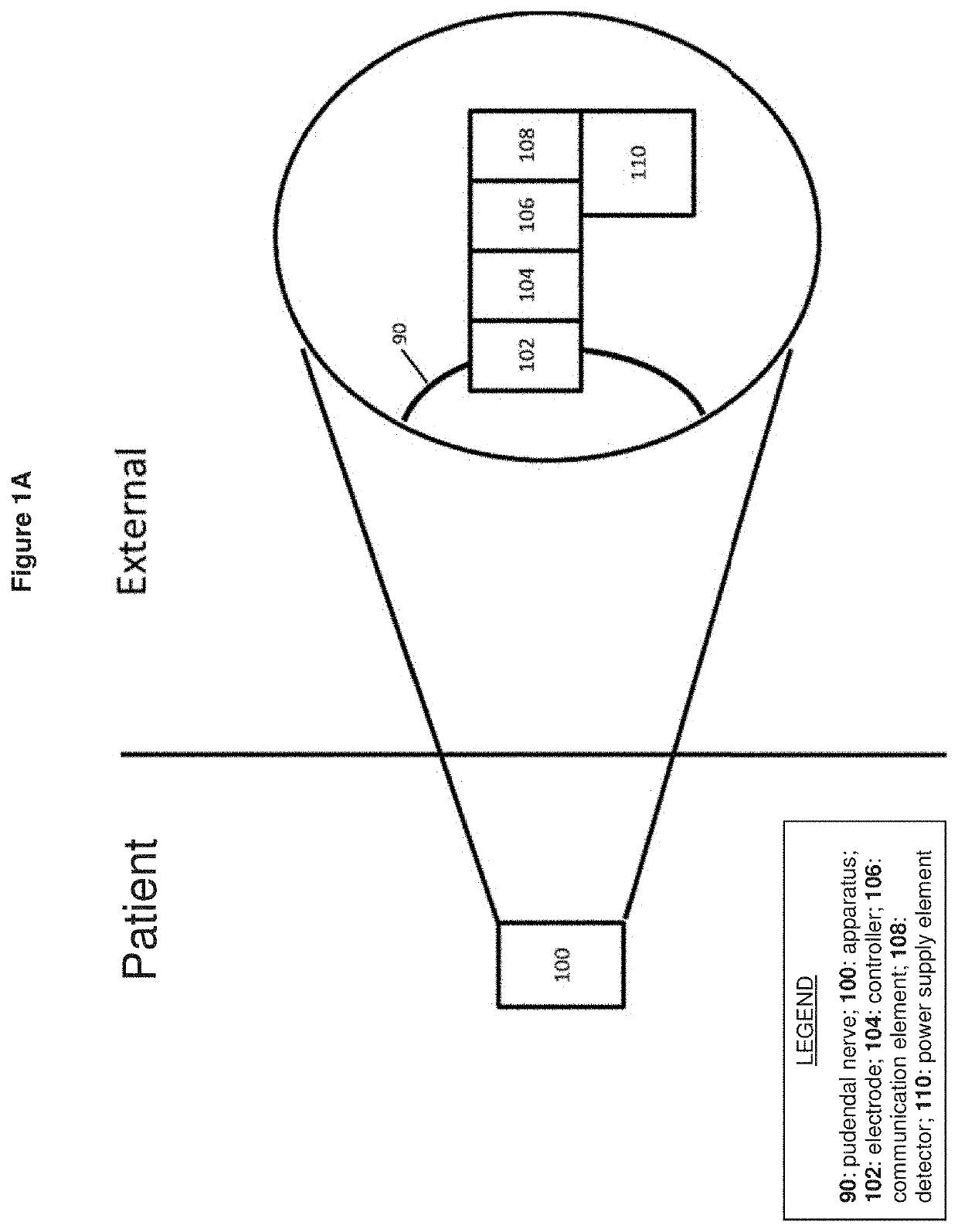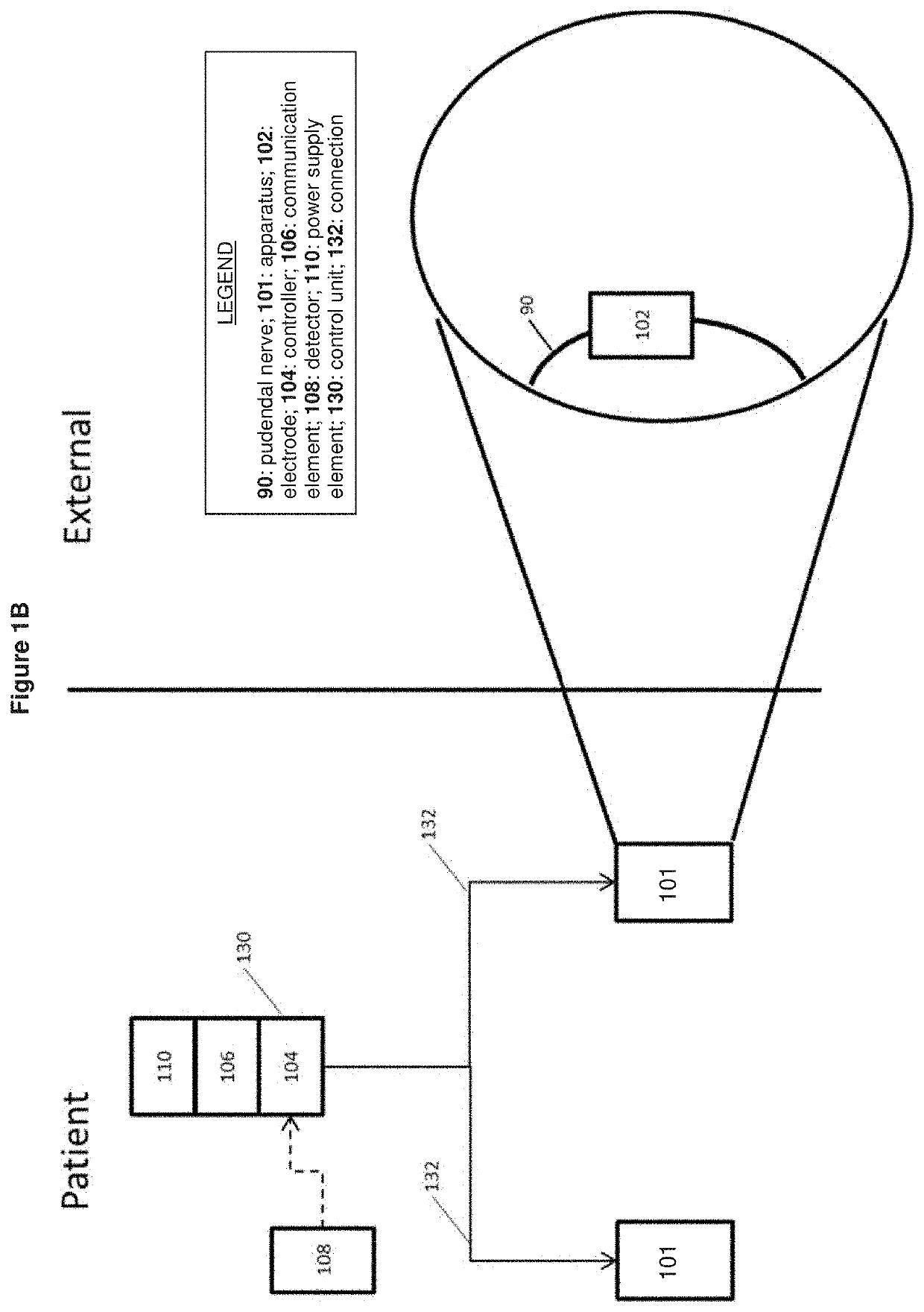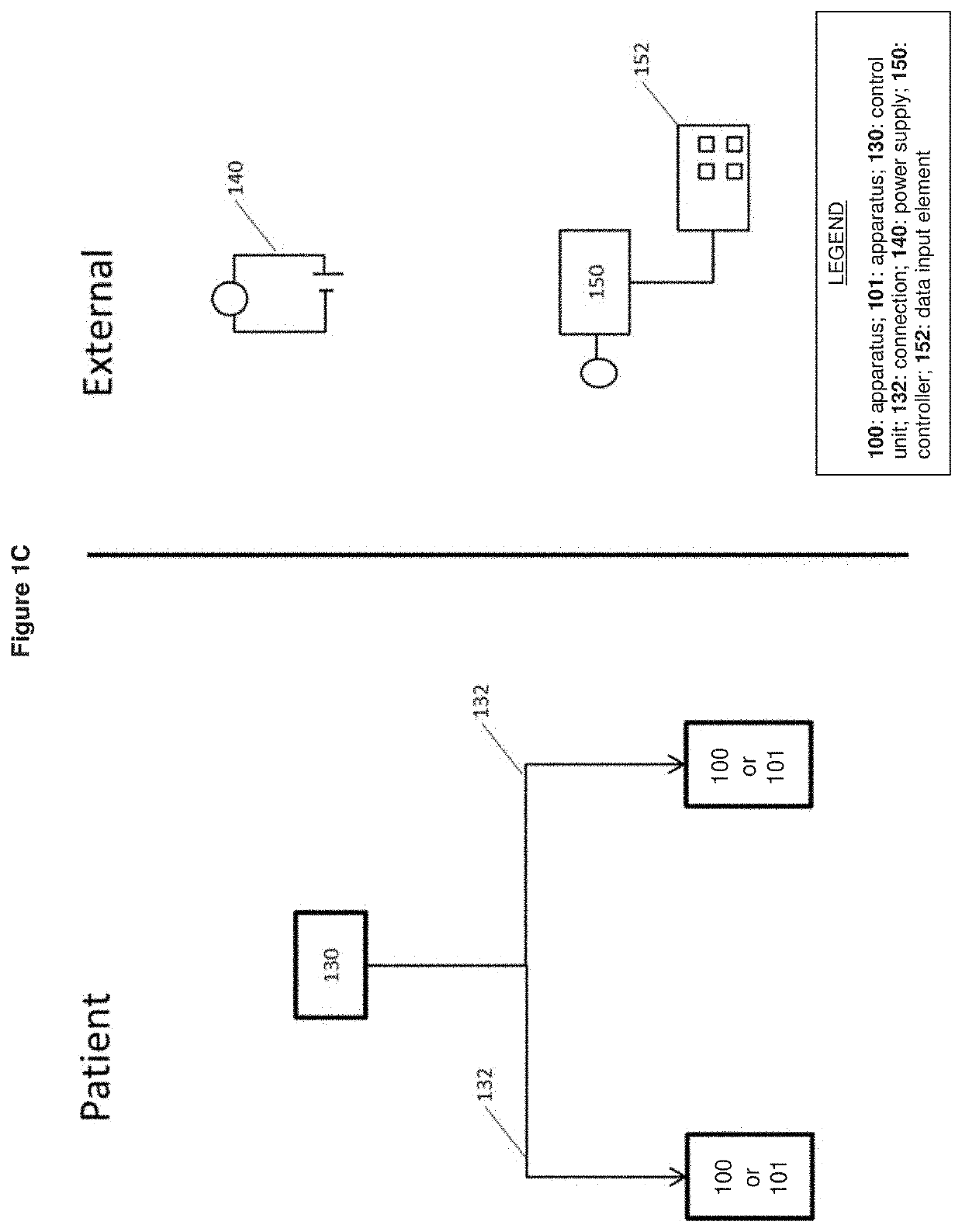State-dependent pudendal nerve stimulation for bladder control
a pudendal nerve and state-dependent technology, applied in the field of state-dependent pudendal nerve stimulation for bladder control, can solve the problems of limited success of alternative pharmacological treatments for bladder dysfunction, affecting the treatment effect of patients, and limiting the suitability of such treatments in the majority of patients, so as to improve bladder capacity, increase bladder capacity, and high intensity
- Summary
- Abstract
- Description
- Claims
- Application Information
AI Technical Summary
Benefits of technology
Problems solved by technology
Method used
Image
Examples
example 1
Effect of Sensory Pudendal Nerve Stimulation During Single-Fill Cystometry on Bladder Capacity
[0196]In order to assess the possible use of pudendal nerve stimulation in the treatment of OAB, bladder capacity following pudendal nerve stimulation was assessed in female Wistar rats. Here bladder capacity was shown to increase following pudendal nerve stimulation (FIG. 3).
[0197]The increase in bladder capacity was dependent upon stimulation amplitude and repetition frequency (two-way ANOVA, p 0.001 for both amplitude and frequency, n=9 for 0.3 T to 1 T, n=7 for 1.5 T, 20 Hz, and n=6 for 1.5 T, 1 and 10 Hz). The largest increase was at 1.5 Tat 10 Hz, in which the average bladder capacity was 253% of the non-stimulated control trials. Stimulation at 10 Hz led to the largest increases in bladder capacity, but the relative increases in bladder capacity were not different between 10 and 20 Hz except at 0.6 T (p<0.001) (FIG. 3D). Increasing stimulation amplitude from 1 T to 1.5 Tresulted in a...
example 2
Effect of Sensory Pudendal Nerve Stimulation During Single-Fill Cystometry on Voiding Efficiency
[0199]Further tests were performed in order to determine the effect of sensory pudendal nerve stimulation on voiding efficacy.
[0200]Increasing stimulation amplitude also led to a decrease in voiding efficiency. Changes in voiding efficiency were also dependent upon stimulation amplitude and repetition frequency (two-way ANOVA, p<0.001 for both amplitude and frequency, n=7 for 0.3 T to 1 T, n=6 for 1.5 T, 20 Hz, and n=5 for 1.5 T, 1 and 10 Hz) (FIG. 4B). On average 10 Hz stimulation led to the largest decreases in voiding efficiency. At higher amplitudes, micturition events followed termination of the stimulus. However, at the amplitude which yielded the largest increases in bladder capacity, “reflex” voiding efficiency was still less than control values for 1 or 10 Hz (p=0.002 and p<0.001 respectively). The reflex voiding efficiency was not statistically different from control values for ...
example 3
Effect of Sensory Pudendal Nerve Stimulation During Single-Fill Cystometry on Subsequent Non-Stimulated Trials
[0202]In order to determine whether the therapeutic effect of sensory pudendal nerve stimulation could provide an ongoing treatment for OAB once nerve stimulation had been halted, the effect of sensory pudendal nerve stimulation during single-fill cystometry on subsequent non-stimulated trials was investigated.
[0203]Stimulation of the sensory pudendal nerve often produced a carry-over effect and bladder capacity was increased on subsequent non-stimulation trials (FIG. 5A, B). Due to high variability in the magnitude of this effect, bladder capacity values from trials that followed 1 or 1.5 T and 10 or 20 Hz were combined in summary data (FIG. 5C). Only groups of trials in which stimulation increased bladder capacity by at least 20% relative to the preceding control trial and in which at least three non-stimulated trials followed the stimulated trial were included (n=15, 48% ...
PUM
 Login to View More
Login to View More Abstract
Description
Claims
Application Information
 Login to View More
Login to View More - R&D
- Intellectual Property
- Life Sciences
- Materials
- Tech Scout
- Unparalleled Data Quality
- Higher Quality Content
- 60% Fewer Hallucinations
Browse by: Latest US Patents, China's latest patents, Technical Efficacy Thesaurus, Application Domain, Technology Topic, Popular Technical Reports.
© 2025 PatSnap. All rights reserved.Legal|Privacy policy|Modern Slavery Act Transparency Statement|Sitemap|About US| Contact US: help@patsnap.com



